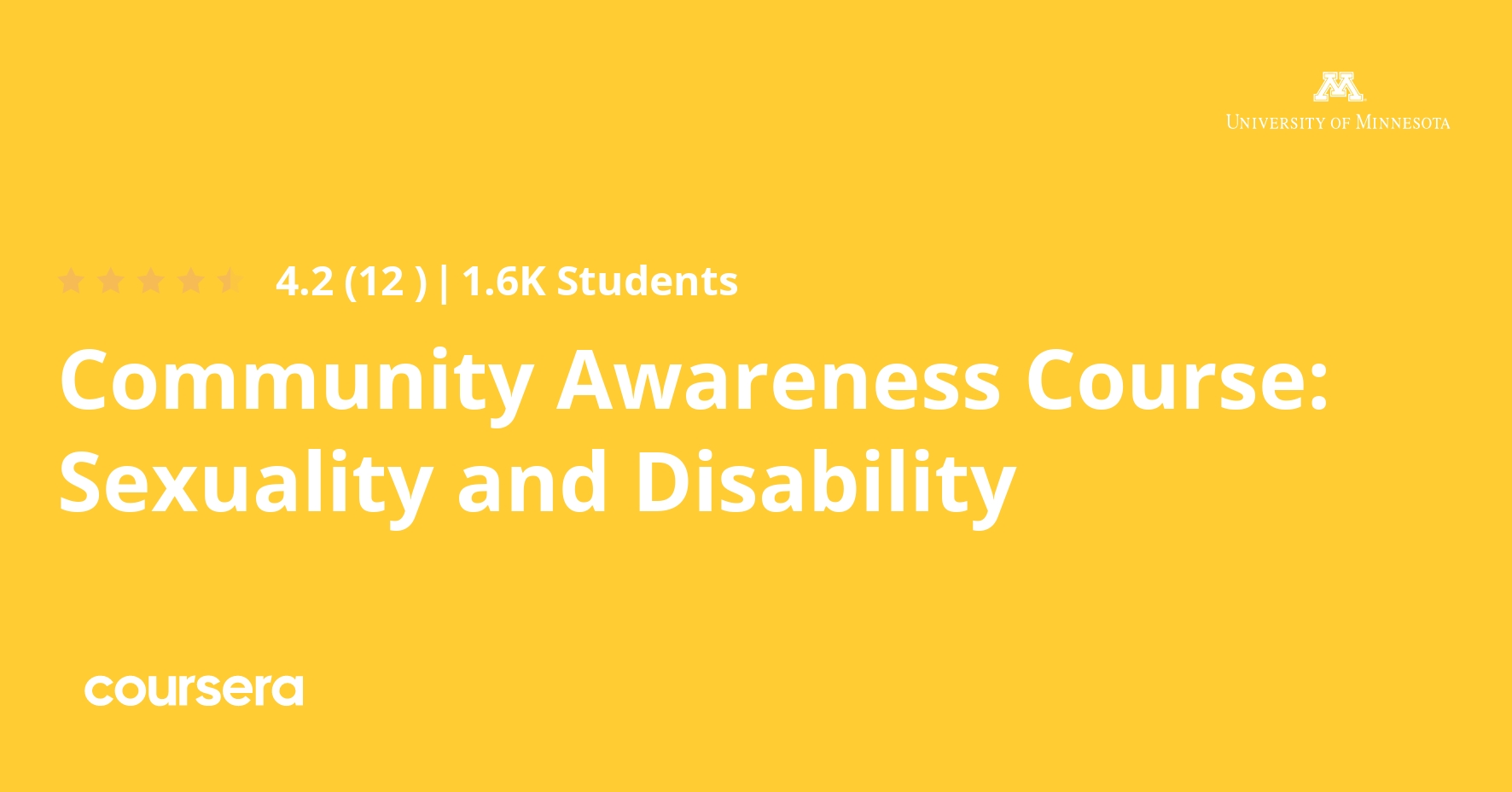Description
This community awareness course from the University of Minnesota Program on Human Sexuality will provide you with a solid introduction to human sexuality for those living with disabilities. Often there are assumptions that the disabled or differently abled people are not sexual, do not have sexual needs, or cannot be involved sexually. In this professionally produced one-hour course, you’ll learn about the basics of disabilities and human sexuality. We’ll then learn about three different conditions, Arthritis, Cerebral Palsy and Dwarfism, as examples of the sexuality related issues that people with these disabilities may face. In this course, you will 1) confront some of the societal myths and beliefs that are associated with sexuality and disability; 2) understand and foresee issues that may relate to fulfilling sexuality with regard to people with disabilities and the differently-abled; and 3) understand some of the physical barriers that people living with disabilities may need to deal with to be sexually active.
What you will learn
Introduction From the Author
Human Sexuality
Human sexuality is an important part of human adult relationships, and is regarded as a right for all adults to express themselves. Understanding human sexuality from the perspective of people with disabilities or who are differently abled is important, as this is an area frequently missing from discussion of human sexuality.
Introduction to Physical Disability
Disability or different ability is an area not often included in sexuality discussion. This section introduces the conversation about the importance of sexuality in people who are differently abled, and some of the barriers and facilitators that need to be considered in this discussion.
Arthritis
Arthritis is a condition which can be painful and where this pain reduces some possibilities for some sexual activities. This section provides some possibilities for having sex while minimizing pain, through different positions and activities.



